Thirty years ago, as the only reporter for “The Chaffee County Times” in quiet little Buena Vista, Colo., I covered the biggest story of the year, largely by just looking out of my office window.
Buena Vista (pronounced BYOO-nuh-Vista by the locals, who will absolutely correct you if you dare try to give the name some Spanish flare) and much of the upper Arkansas River Valley was bracing for a spring runoff for the ages. It had been a hell of a winter, and in mid-April, “Byoonie” got nailed by two or three impressive snowstorms, one right after the other. The storms added to an already impressive snowpack in the mountains, and by mid-May, as temperatures in Colorado’s “Banana Belt” started to climb into the high 70s, little Cottonwood Creek that runs off the Sawatch Range west of town started to leave its banks in places.
Local businesses filled sandbags and stacked them along the banks in hopes of keeping the water from flowing into front doors or filling basements, and the town’s administration hustled to make disaster plans. Thankfully, Mother Nature stepped in and slowed the runoff with a dose of cold, spring weather. I remember it being almost July before Cottonwood Pass that climbs the mountains and connects Gunnison County to Chaffee County opened up for the season–the plows just couldn’t break through.
Since that area was my general “go-to” for summer trout season, I was despondent. Every day, I’d stare out of my office window at Mt. Princeton’s heavy white coat and wondered if the snow would ever come off and if the trout water would ever come into shape. Meanwhile, folks in town kept an eye on the creek–it was a daily concern. Other than some minor issues, Buena Vista escaped none the worse for wear.
Today, I’m sitting in my mother’s dining room in little Cedaredge, Colo. about 120 miles or so, as the crow flies, from Buena Vista (but a solid three-hour drive on a good day), just across the street from little Surface Creek, a straight-pipe ag stream that feeds the orchards of this arid section of the Centennial State by draining snow off the Grand Mesa. As of May 3, the snow measurement gauge at Mesa Lakes recorded a snow depth of 54 inches (almost 150 percent of normal), and folks in this tiny retirement haven are sandbagging the creek banks and hoping for the best.
It’s been a hell of winter in western Colorado, and, frankly throughout much of the West in general. Most Natural Resource Conservation Service snow measurement gauges in Utah are recording snow-to-water equivalent averages at or above 200 percent of normal. In southeast Idaho’s Willow, Blackfoot and Portneuf basin, the NRCS Snotel measurement gauge reported a snow-to-water equivalent of 614 percent of normal. Already, nature trails along the Portneuf River in Pocatello are under water, and there’s a lot more snow to melt and come down.
And, just like it was in tiny Buena Vista all those years ago, it’s the biggest story of the year. That’s because folks in the West have a very intimate relationship with water. Even now, with flooding in low-lying areas a certainty (my girlfriend and I, on our drive along the Portneuf as we made our way south into Utah and eventually Colorado, noticed one ranch almost completely under water, with more water on the way), nobody is really complaining. And, frankly, after most of a lifetime spent in the West, I can’t recall anyone ever really bitching about too much snow or too much water. Here in Cedaredge, folks take a daily look at the Mesa, check the weather and then plan for what’s coming. All those years ago in Buena Vista? Same thing. And while us fly fishers lamented the excess, the whitewater rafting crowd did its best empathize but quietly cheered on the snow clouds.
Certainly there are exceptions to the “there’s never too much water” mindset in the West. In 1976 and again in 2013, the Big Thompson River northwest of Denver devastated downstream communities during epic floods. Last year, the flooding in the northern third of Yellowstone National Park was deemed a disaster that happens just once every 1,000 years.
Usually, it’s quite the opposite. Here in the Rockies and across the Great Basin to the Sierra-Nevada, even after this year’s record-setting winter, we’re still in the throes of a 20-year mega-drought. The region’s largest reservoirs, built almost a century ago to provide water for both people and agriculture, are bracing for more water from melting snow. But the overall impact will be minimal. Snowmelt may fill some storage reservoirs for a time, but it's going to take many more winters like this one to reverse the course of the drought.
That’s why, “Damn, I’m tired of winter,” is a tongue-in-cheek statement. But, “We sure could use the moisture” isn’t.
For us fly fishers, this year offers a glimmer of hope. Maybe there’ll be enough cold water to avoid high-summer fishing closures. Maybe, after a few dismal, dry years, we won’t have to endure “smoke season” come July, and we can safely venture into the high country to chase trout and actually have a campfire. Although, with our friends to the north in Alberta having evacuated over 13,000 residents as they battle over 90 active wildfires in May, it’s reasonable to wonder whether even this year’s epic snowpacks are enough to offer relief from the mounting impacts of climate change.
Still, we can hope that for folks who love to ride the waves of the West’s great rivers, it’s going to be an amazing summer. Little communities like Buena Vista and Alpine, Wyo., and Stanley, Idaho, are going to take advantage of every drop that comes off the high peaks.
But, as a lifelong westerner, I can feel the prevailing mindset among my friends and neighbors – folks who run fishing lodges or grow potatoes or run fly shops. The runoff yet to come down amounts to a reprieve. A grace period. I also think, deep down, even the most skeptical folks are now subscribing to the main tenets of climate change (even if they won’t admit it) – things are just too different today than they were, even just a couple of decades ago. Rivers are warmer. Summers are hotter. The smoke is thicker.
So, as high water jumps the creek banks and runs down city streets in Salt Lake City or hayfields turn into swamps, most folks for whom water is a daily concern aren’t batting an eye. It's going to take more winters like this one to alter the skepticism.
Until then, “We sure could use the moisture.”




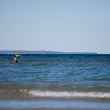
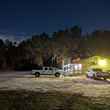





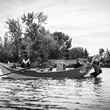



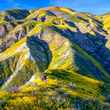
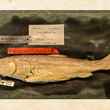




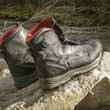
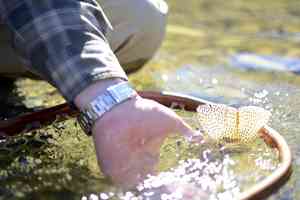
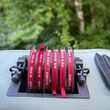



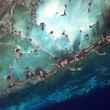

Comments
Kerry replied on Permalink
Nice piece. When I made the Ark my home waters after The Movie turned Cheesman Canyon into freaking Disneyland, I spent many, many days in Sa-LIE-da, organizing my life around runoff. There were certainly wet years and dry years, but nothing as weird as today, with mountain snows melting in an instant. The oceans are warming, and that fact will make everything we used to know about mountain weather pretty close to obsolete.
Pages